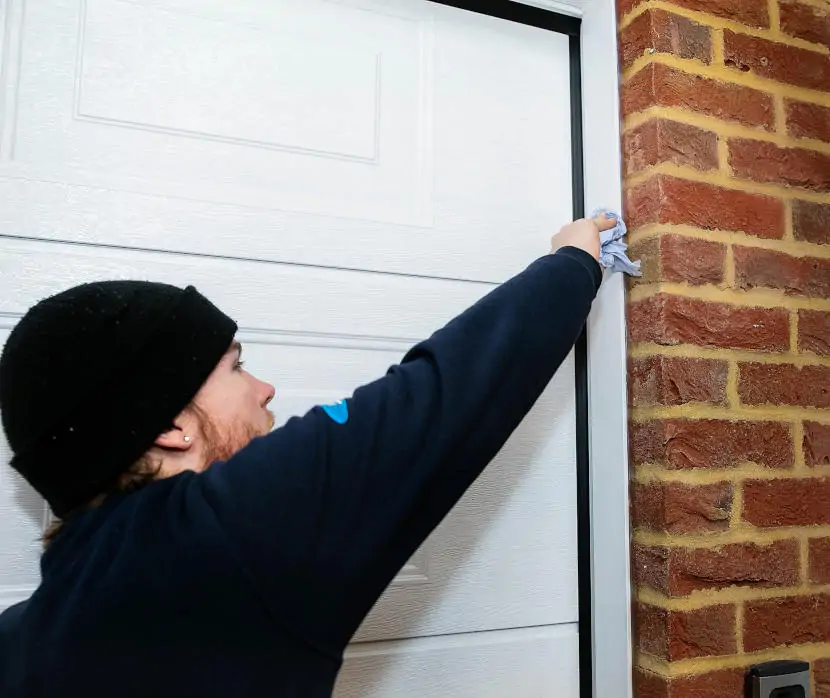Is your garage door hard to open manually, causing frustration and inconvenience? Don’t worry; you’re not alone. In this guide, we’ll explore common reasons why garage doors become difficult to open manually and provide practical troubleshooting tips to help you address the issue effectively.

Understanding Why Your Garage Door Is Hard to Open Manually
Several factors can contribute to a garage door becoming difficult to open manually. Understanding these factors is the first step in troubleshooting the problem and finding a solution.
Common Causes of a Garage Door Hard to Open Manually
- Lack of Lubrication: Over time, the moving parts of your garage door system, such as hinges, rollers, and tracks, can become dry and rusty, making it challenging to operate the door manually.
- Broken Springs: Garage door springs play a crucial role in counterbalancing the weight of the door, making it easier to open and close. If a spring breaks or loses tension, it can significantly affect the door’s manual operation.
- Misaligned Tracks: Misaligned or bent tracks can prevent the rollers from moving smoothly, causing the door to bind and become difficult to open manually.
- Worn Rollers: Worn or damaged rollers can create friction and resistance as the door moves along the tracks, making it harder to open and close.
- Tension Adjustment: The tension of the garage door springs may need to be adjusted periodically to ensure smooth operation. If the springs are too loose or too tight, it can make the door hard to open manually.
Garage Door Hard To Open Manually: Troubleshooting Tips
Now that you understand some common causes of a garage door being hard to open manually, let’s explore some practical troubleshooting tips to help you address the issue:
1. Lubricate Moving Parts
Start by lubricating the moving parts of your garage door system, including hinges, rollers, tracks, and springs, using a silicone-based lubricant. This will help reduce friction and make it easier to operate the door manually. Be sure to wipe away any excess lubricant to prevent buildup.
2. Check and Adjust Spring Tension
Inspect the garage door springs for signs of damage or wear. If a spring appears broken or stretched, it will need to be replaced. If the springs are intact but the door is still hard to open manually, you may need to adjust the tension. Consult your garage door manufacturer’s instructions or seek the assistance of a professional technician for proper tension adjustment.
3. Inspect and Align Tracks
Examine the tracks for any signs of misalignment or damage. Use a level to ensure that the tracks are straight and properly aligned. If you notice any bends or obstructions, gently tap the tracks back into alignment using a rubber mallet. Be careful not to damage the tracks further.
4. Replace Worn Rollers
Inspect the rollers for signs of wear or damage. If the rollers are worn, cracked, or seized, they should be replaced. Replacement rollers can be purchased from your local hardware store or garage door supplier. Be sure to choose rollers that are compatible with your garage door system.
Read too: Why Your Liftmaster Garage Door Won’t Stay Closed and How to Fix It? Troubleshooting Tips
5. Seek Professional Assistance
If you’re unable to identify or resolve the issue on your own, it’s best to seek the assistance of a professional garage door technician. They have the knowledge, experience, and tools to diagnose and repair a wide range of garage door problems, ensuring safe and reliable operation.
Conclusion
Dealing with a garage door hard to open manually can be frustrating, but with the right troubleshooting techniques, you can address the issue effectively and restore smooth operation to your garage door. By lubricating moving parts, checking and adjusting spring tension, inspecting and aligning tracks, replacing worn rollers, and seeking professional assistance when needed, you can ensure that your garage door operates smoothly and reliably for years to come.



Leave a Reply